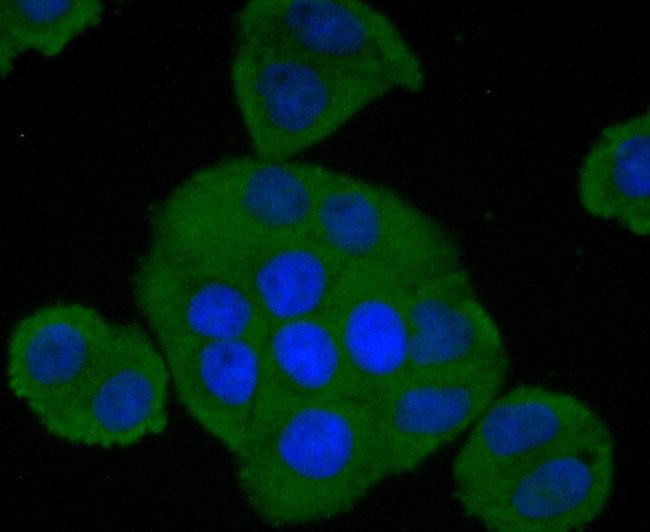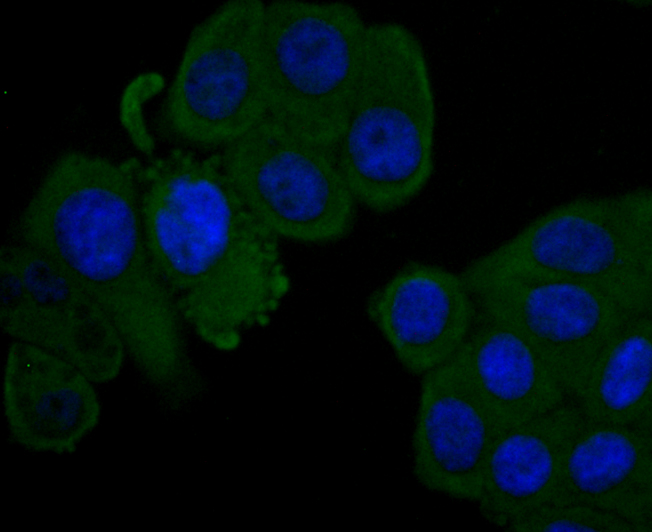Product Detail
Product NameFactor H Rabbit mAb
Clone No.JA52-13
Host SpeciesRecombinant Rabbit
Clonality Monoclonal
PurificationProA affinity purified
ApplicationsWB, ICC
Species ReactivityHu
Immunogen Descrecombinant protein
ConjugateUnconjugated
Other Namesadrenomedullin binding protein antibody
age related maculopathy susceptibility 1 antibody
AHUS 1 antibody
AHUS1 antibody
AMBP 1 antibody
AMBP1 antibody
ARMD 4 antibody
ARMD4 antibody
ARMS 1 antibody
ARMS1 antibody
beta 1 H globulin antibody
beta 1H antibody
beta1H antibody
CFAH_HUMAN antibody
CFH antibody
CFHL 3 antibody
CFHL3 antibody
Complement factor H antibody
complement factor H, isoform b antibody
Factor H antibody
factor H like 1 antibody
FH antibody
FHL 1 antibody
FHL1 antibody
H factor 1 (complement) antibody
H factor 1 antibody
H factor 2 (complement) antibody
HF 1 antibody
HF 2 antibody
HF antibody
HF1 antibody
HF2 antibody
HUS antibody
MGC88246 antibody
Accession NoSwiss-Prot#:P08603
Uniprot
P08603
Gene ID
3075;
Calculated MW140 kDa
Formulation1*TBS (pH7.4), 1%BSA, 40%Glycerol. Preservative: 0.05% Sodium Azide.
StorageStore at -20˚C
Application Details
WB: 1:500-1:2,000
ICC: 1:50-1:200
Western blot analysis of Factor H on human lung tissue lysate using anti-Factor H antibody at 1/1,000 dilution.
ICC staining Factor H in Hela cells (green). The nuclear counter stain is DAPI (blue). Cells were fixed in paraformaldehyde, permeabilised with 0.25% Triton X100/PBS.
ICC staining Factor H in HepG2 cells (green). The nuclear counter stain is DAPI (blue). Cells were fixed in paraformaldehyde, permeabilised with 0.25% Triton X100/PBS.
The Factor H gene family is a multidomain, multifunctional protein family whose individual members are defined by conserved structural elements, which display diverse yet often overlapping functions. These proteins share a common structural motif, the short consensus repeat (SCR), which is structurally conserved among related genes and between phylogenetically divergent species. The human complement Factor H (FH, CFH, HUS, b-1H) gene encodes a 1213 amino acid serum glycoprotein which is arranged into 20 SCRs, each approximately 60 amino acids long, and an 18-residue leader sequence. Factor H controls the function of the alternative complement pathway and acts as a cofactor with Factor I (C3b inactivator). In addition, Factor H has functional activity outside of the complement system, where it can bind to the cellular integrin receptor (CD11b/CD18), interact with cell surface glycosaminoglycans and associate with the surface of certain pathogenic microorganisms. Deficiencies in Factor H is a common characteristic of acute renal disease.
If you have published an article using product 49587, please notify us so that we can cite your literature.





 Yes
Yes



